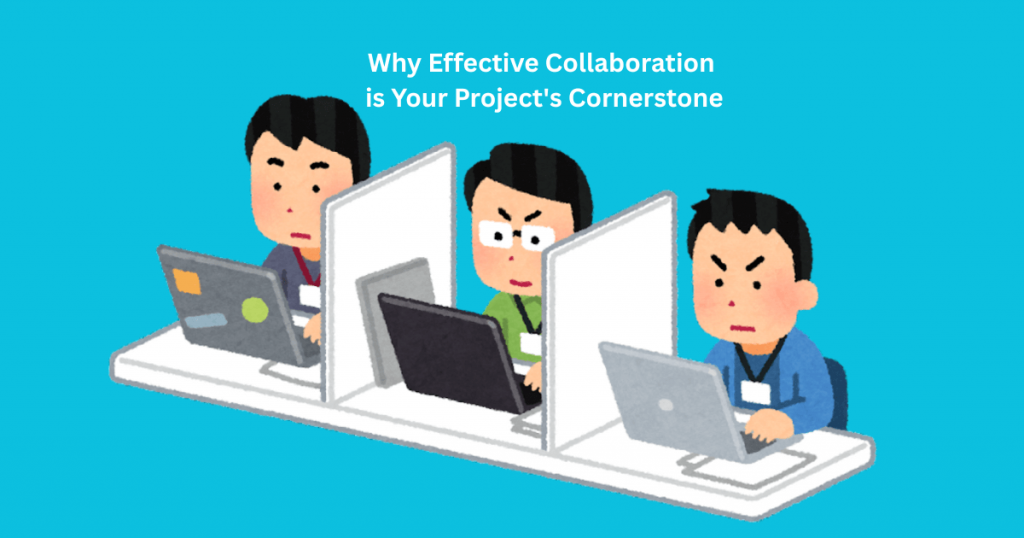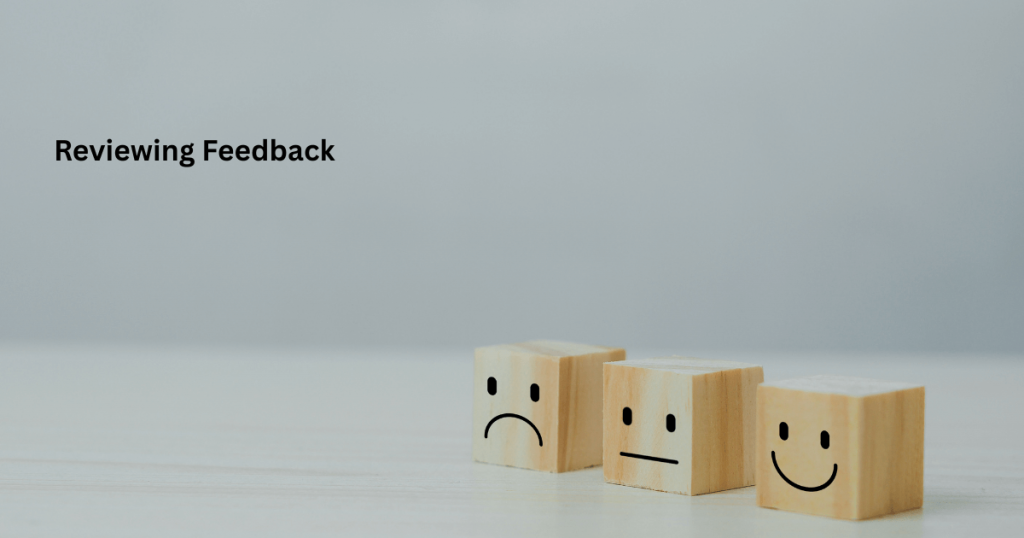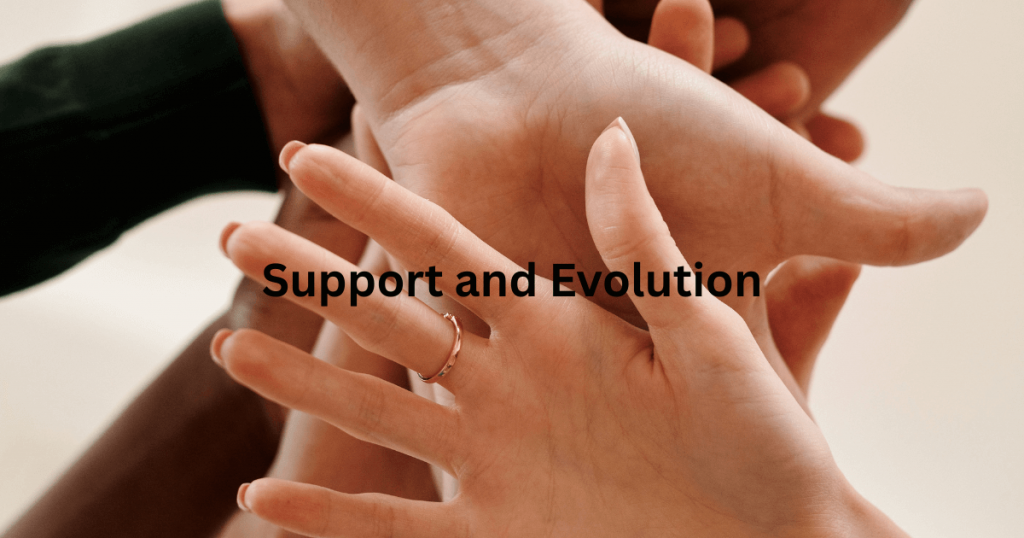Do you find yourself intimidated by the thought of hiring a web developer, or unsure how to communicate your vision effectively? Many small business owners struggle to bridge the gap between their business goals and the technical language of web development, leading to misunderstandings, delayed projects, and unsatisfactory results. Without a clear understanding of how to collaborate, your investment in web development might not yield the desired growth.
Imagine confidently articulating your website needs, participating in a smooth development process, and launching a digital product that perfectly aligns with your business objectives and exceeds your expectations. Picture a productive partnership with a web developer who understands your vision and translates it into a high-performing website. Think of the peace of mind, efficient project delivery, and enhanced online presence that comes from effective collaboration.
This post, “Collaborating for Success: How to Work Effectively with Web Developers for Your Business,” will provide a practical guide to engaging with web development professionals. We’ll cover everything from defining your needs and choosing the right developer to managing the project and providing constructive feedback. Get ready to build strong partnerships that transform your digital dreams into reality.
Table of Contents

Why Effective Collaboration is Your Project’s Cornerstone
Hiring a web developer isn’t just about delegating a task; it’s about forming a collaboration that is the cornerstone of your project’s success. Your developer brings technical expertise, but you bring invaluable business insight, industry knowledge, and a clear vision for your brand. When these two perspectives align and communicate effectively, the result is a website that not only functions flawlessly but also truly serves your strategic goals.
Poor collaboration can lead to:
- Misunderstandings: Resulting in features you don’t need or missing critical functionality.
- Scope Creep: Uncontrolled expansion of project requirements, leading to budget overruns and delays.
- Frustration: On both sides, due to unclear expectations or slow feedback loops.
- Subpar Results: A website that doesn’t fully meet your business needs or user expectations.
- Wasted Investment: Money spent on a site that doesn’t deliver ROI.
Effective communication and a clear process are vital to transforming your website vision into a successful reality.

1. Define Your Needs First: The Project Scope
Before you even talk to a developer, your most critical step is to define your needs and project scope clearly. This helps you understand what you want to achieve and gives developers the information they need to provide accurate quotes and timelines.
Your project scope should include:
- Website Type: (As discussed in Post 2) Is it informational, e-commerce, portfolio, etc.?
- Goals: What do you want your website to do for your business? (e.g., “generate 5 leads per week,” “sell 10 products a day,” “provide customer support”). Be specific and measurable.
- Target Audience: Who are you building this website for? Their needs, demographics, tech-savviness.
- Key Features/Functionality: List essential features (e.g., “online booking system,” “product catalog with filters,” “blog,” “user login”). Prioritize them (must-have, nice-to-have).
- Content: What content do you have, and what needs to be created? (Text, images, videos).
- Design Preferences: Provide examples of websites you like/dislike, your brand guidelines (colors, fonts, logo).
- Budget: Be realistic and transparent about your budget range.
- Timeline: When do you need the project completed?
A well-defined scope is your compass for the entire development journey.

2. Choosing the Right Developer: Beyond Technical Skills
Finding the right developer involves more than just technical prowess. You need someone who is a good fit for your business and communication style.
Look for:
- Relevant Experience: Do they have a portfolio of websites similar to what you need? Have they worked with your chosen platform (e.g., WordPress, Shopify)?
- Communication Skills: Are they clear, responsive, and able to explain technical concepts in plain language? This is paramount.
- Problem-Solving Approach: Do they seem pragmatic and solution-oriented?
- Process Transparency: Do they outline their development process, including milestones and feedback loops?
- Client Reviews/Testimonials: What do past clients say about working with them?
- Availability: Can they commit to your timeline?
- Cultural Fit: Do you feel comfortable working with them?
Where to look: Freelance platforms (Upwork, Fiverr for small tasks, Toptal for vetted talent), web development agencies, professional networks (LinkedIn), and referrals from other business owners. Interview multiple candidates.

3. The Development Process: Milestones and Feedback
A typical web development project follows a structured process with key milestones and opportunities for feedback. Understanding this process will help you stay engaged and ensure the project remains on track.
- Discovery & Planning: Initial meetings, scope definition, competitive analysis, defining user journeys.
- Design & Prototyping: Wireframes (layout), mockups (visual design), interactive prototypes (how it feels). Your key feedback opportunity here.
- Development & Coding: Front-end and back-end development begins. Your involvement might be less frequent but critical for addressing questions.
- Content Integration: Populating the site with your text, images, and other media.
- Testing & Quality Assurance (QA): Thorough testing for bugs, responsiveness, functionality, and performance across devices and browsers. Your final comprehensive review.
- Launch: Deploying the website to your live server.
- Post-Launch Support & Maintenance: (As discussed in Post 6) Ongoing updates, security, bug fixes, and potentially new features.
Throughout this process, scheduled feedback sessions are crucial.

4. Providing Effective Feedback: Be Clear and Constructive
One of the most challenging, yet crucial, aspects of collaboration is providing effective feedback. Vague or emotional feedback can lead to frustration and wasted time.
- Be Specific: Instead of “I don’t like it,” say “The blue in the header clashes with our brand’s green; can we try a darker shade of blue or a neutral gray?”
- Focus on the Goal: Relate feedback back to your defined project goals and target audience. “This design doesn’t clearly show our call to action for booking appointments.”
- Be Objective: Base feedback on functionality, usability, brand consistency, and user experience, rather than just personal preference.
- Provide Examples: If you have an idea, show an example from another website.
- Consolidate Feedback: Gather all your comments and deliver them in one go rather than piecemeal messages.
- Use Visuals: Screenshot areas and use annotation tools if necessary.
- Respect Expertise: While it’s your vision, trust your developer’s technical recommendations. If you disagree, ask for their reasoning.
Clear, constructive feedback is a gift that helps your developer deliver exactly what you need.

5. Managing Expectations and Communication
Managing expectations and communication throughout the project is vital for a positive experience for both parties.
- Be Realistic about Timelines & Costs: Complex features take time and money. Avoid constant “urgent” requests.
- Agree on Communication Methods: How will you communicate? (Email, project management tool, video calls). How often?
- Designate a Single Point of Contact: For larger teams, have one person responsible for gathering internal feedback and communicating it to the developer.
- Understand Technical Limitations: Sometimes, what you want is not feasible, or is extremely complex/costly. Be open to alternative solutions.
- Document Decisions: Keep a record of all agreements, changes, and key decisions.
- Celebrate Milestones: Acknowledge progress to keep morale high.
Open, honest, and proactive communication prevents misunderstandings and builds trust.

6. Post-Launch: Support and Evolution
The launch of your website is not the end of the development journey; it’s the beginning. Plan for post-launch support and evolution.
- Training: Ensure you (or your team) receive adequate training on how to use your CMS, update content, and manage basic site functions.
- Documentation: Request documentation for any custom features or complex setups.
- Maintenance Plan: Discuss an ongoing maintenance plan with your developer (as covered in Post 6) for updates, security, and backups.
- Analytics Integration: Ensure analytics tools are properly set up to track performance.
- Future Phases: If your project is large, plan for future phases and feature additions.
A website is a living asset that needs continuous care and occasional evolution to remain effective and competitive.
Your Collaboration Playbook: Building Digital Success Together
You now have a powerful collaboration playbook for working effectively with web developers for your business. From defining your needs and choosing the right developer, to navigating the development process with milestones and feedback, providing clear and constructive input, managing expectations, and planning for post-launch support, you have the essential strategies to foster successful partnerships.
Remember, your web developer is a strategic partner who can translate your business vision into a powerful online presence. By embracing clear communication, mutual respect, and a structured approach, you’re not just building a website; you’re building a foundation for sustained digital success.
Embrace this playbook, and watch as your collaborative efforts lead to a website that truly elevates your business.
Final Thoughts
You’ve now explored how to work effectively with web developers for your business, setting the stage for successful collaboration. From defining your needs and selecting the right partner, to understanding the development process, giving effective feedback, and planning for post-launch, you have a comprehensive guide. Remember, strong communication and a clear understanding of roles are paramount to transforming your digital vision into a reality. If you need personalized guidance or have questions about managing a web development project, please feel free to email me at info@arman-portfolio.com. I’m here to help you build powerful online assets through effective partnerships!
Frequently Asked Questions (FAQs)
Q1: Why is effective collaboration crucial when working with a web developer?
A1: Effective collaboration prevents misunderstandings, avoids scope creep, reduces frustration, leads to better results, and ensures your website truly aligns with your business goals.
Q2: What’s the most important thing to do before contacting a developer?
A2: Clearly define your project’s needs and scope, including your website type, business goals, target audience, key features, content, budget, and timeline.
Q3: How do I choose the right developer for my small business?
A3: Look for relevant experience (portfolio), strong communication skills, a transparent process, positive client reviews, and a good cultural fit. Interview multiple candidates.
Q4: What’s the purpose of “wireframes” and “mockups” in the development process?
A4: Wireframes are basic layouts showing content structure. Mockups are static visual designs. Both are crucial for feedback on design and layout before coding begins, saving time and money.
Q5: How can I provide effective feedback to my web developer?
A5: Be specific, objective, relate feedback to project goals, provide examples, consolidate your comments, use visuals (screenshots), and respect their technical expertise.
Q6: What is “scope creep,” and how can I avoid it?
A6: Scope creep is when project requirements expand beyond the initial agreement, leading to delays and budget overruns. Avoid it by having a clear, agreed-upon scope, documenting changes, and discussing new requests as separate tasks.
Q7: What are some important things to discuss with my developer post-launch?
A7: Training on the CMS, documentation for custom features, an ongoing maintenance plan, proper analytics integration, and plans for future updates or phases.
Q8: Should I have a single point of contact when working with a developer, even if my business has a team?
A8: Yes, ideally. Designating one person to gather internal feedback and communicate it to the developer streamlines communication and prevents conflicting instructions.
Q9: Why is it important to ask for source files after the project is complete?
A9: Receiving source files (e.g., .ai, .psd, .php) gives you ownership and the ability to make future edits or hire another developer if needed, without starting from scratch.
Q10: What’s the biggest benefit of a strong client-developer partnership?
A10: A strong partnership leads to a website that not only functions flawlessly but also perfectly translates your business vision into a powerful, effective online asset that drives growth.

As a programmer and graphic designer, I’ve always been driven to immerse myself in diverse graphical tools and languages. This hands-on experience has been pivotal, not only expanding my technical proficiency but also sharpening my unique ability to adapt and apply these skills to new challenges and varied work environments.